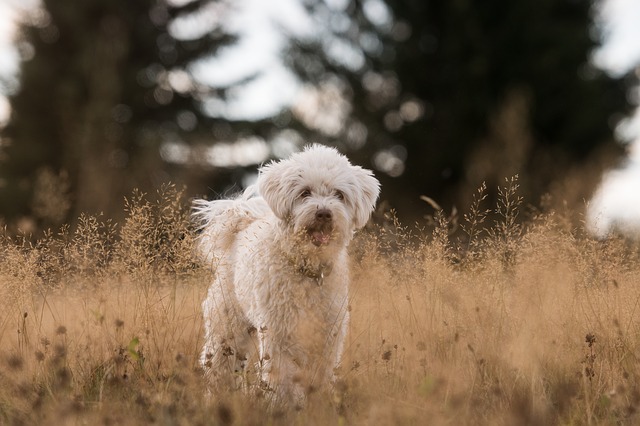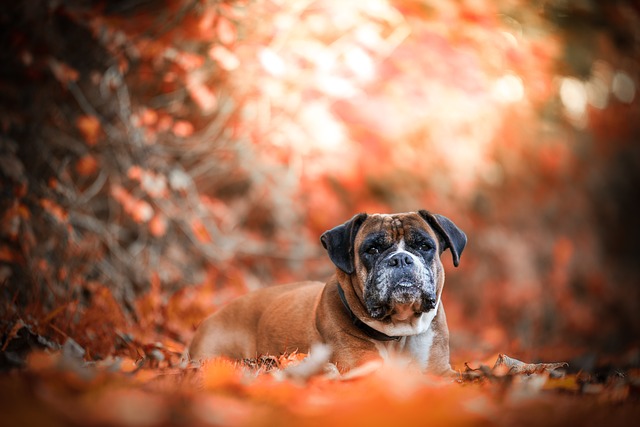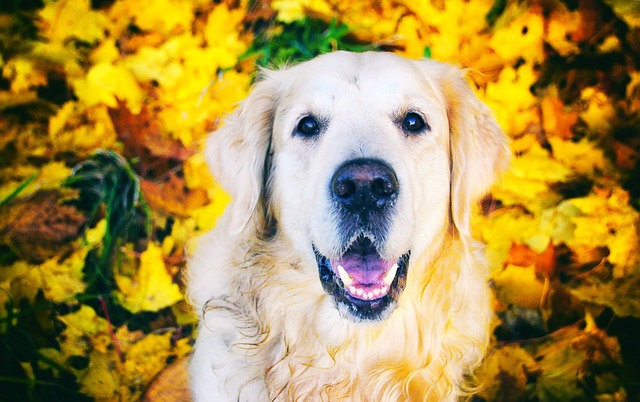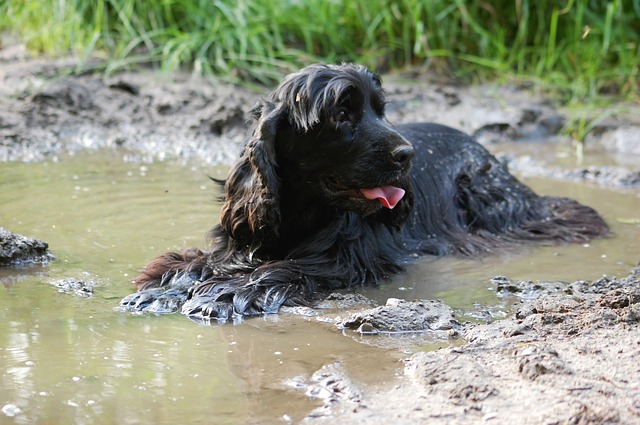As the season changes, so do the allergies, and many search for ways to help with dog allergies. And just like people, your dog can be affected. Although the fall does not have all the blooms and new growths that bother many, such as pollen and grass, it has dying plants and wind, moisture, and cooler temperatures that stir up the irritants. In addition, the fall brings with it mold, which can affect your pet whether he is allergic or not.

Dr. Julie Horton, medical director at the ASPCA Adoption Center answered a few questions about fall allergies and how to help your pet cope.
What are the common fall allergies we see in dogs?
Dr. Horton: There are no specific “fall” allergies, but they tend to surface with seasonal changes. Allergic symptoms which are cyclical and repeatedly surface at the same time each year are referred to as inhalant allergies or atopy as opposed to a food allergy. Your dog can be allergic to pollen, dust, leaves, grass or other substances which may be more common in the fall.
Are there certain breeds of dogs that are more likely to have these allergies?
Dr. Horton: Allergies may be present in any dog breed, but we tend to see inhalant allergies more often in the flat face breeds like bulldogs.

Can my dog become allergic to something as he ages that never bothered him before?
Dr. Horton: Dogs can develop allergies to different stimulants as they age. It can vary from year to year as well. The only way to effectively diagnose them is to do intradermal skin testing. This is performed by a board-certified veterinary dermatologist who will then prescribe allergy injections based on test results.
How do you know your dog is allergic to something?
Dr. Horton: Signs of inhalant allergies are most often exhibited by:
- Scratching
- Reddened skin or rash particularly on the stomach or paws
- Excessive paw licking
- Hair loss
- Itchy red eyes
- Ear infections.
Other symptoms may be:
- Sneezing
- Coughing
- Fur color change (tears and saliva contain porphyrins, which stain light-colored fur from white to brown)
Related: What’s the deal with colostrum for dogs and why is it getting so much buzz?
Why Should You Take Your Dog to the Vet for Allergies? Won’t they just go away when the season changes?
Dr. Horton: Allergies can lead to severe, chronic, and very painful conditions if left untreated. Always consult with your veterinarian prior to trying any medications.

What are some of the things we can do to help alleviate their suffering? How do we help with dog allergies?
Dr. Horton: It’s recommended to visit your veterinarian when you suspect allergies. If left untreated they can lead to secondary bacterial or yeast infections which can be difficult to treat. In addition, if your pet is persistently itchy, relieving symptoms will help alleviate self-trauma as a result of scratching.
Typically antihistamines are recommended but it’s important to note that effectiveness varies not only from dog to dog but also amongst different brands.
It is very important to consult with your veterinarian prior to giving any over the counter medications as they can have toxic effects in dogs.
Baths with a prescription shampoo and leave-in conditioners are often used to calm the skin. If the allergy is more severe your veterinarian may prescribe low dose steroids or cyclosporine. If secondary bacterial and /or yeast infections are present oral medications may be indicated. Because ear infections often accompany inhalant allergies a thorough ear exam should be performed and any signs of infection treated.

Mold
Petmd.com warns that during the fall mold can grow rapidly in cold, dark places in your home. Molds can be allergens and as well as toxins to both you and your dog.
Clean your house! Make sure you fix any leaks or cracks that allow moisture into your home. Make sure you run the fan in your bathroom after using the shower. If you do not have an ceiling fan, you should buy a plug-in to run afterward to remove moisture.
Regularly clean your dog’s beds and towels, especially if they get wet a lot. Do not assume that big think dog bed is drying on its own – it might be growing mold instead. Wash things with a drop of bleach to kill bacteria and mold.
If you suspect your house may have mold, have a professional out as soon as possible. Mold can be fatal!
Follow up reading:
The Complete Natural Remedies Guide For Itchy Dogs And Dogs With Allergic Skin Reactions
5 Things Dog Owners Should Know About Giving Benadryl To Dogs
 Toledo, United States.
Toledo, United States.